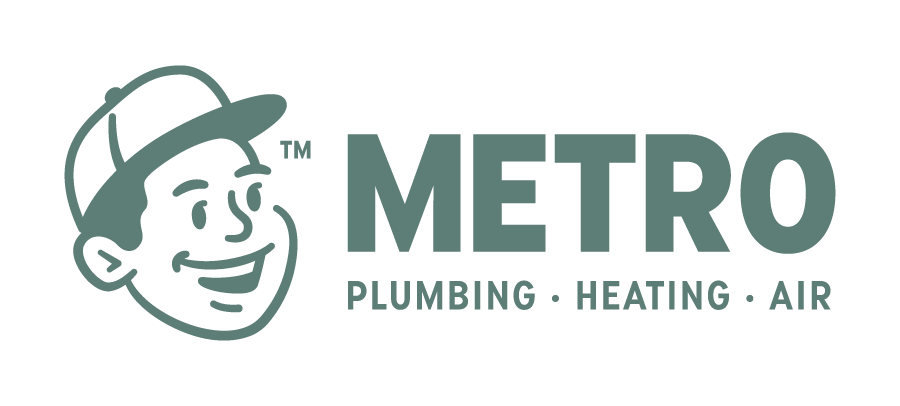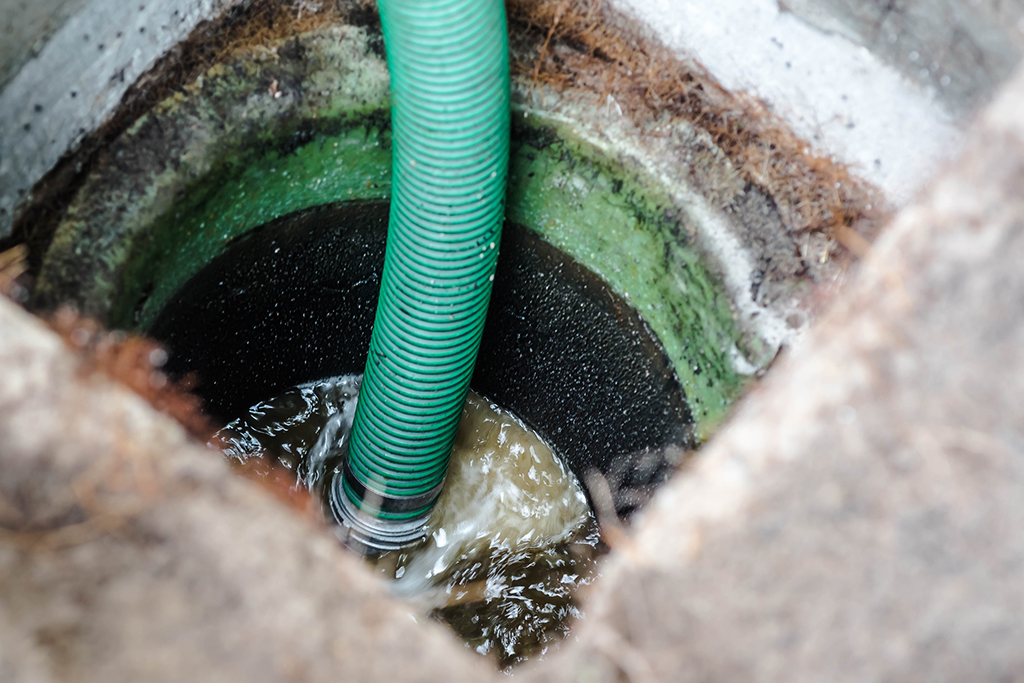Photo By DEBOVE SOPHIE at istock
It’s estimated that one in every four American homes has a septic system installed, with a higher prevalence being recorded in rural areas that may not have a municipal sewer service. Comprising a septic tank and a drain field, which is also called a soil absorption field, septic systems are underground wastewater treatment structures that rely on a combination of natural processes and technology to treat wastewater coming from the kitchen, bathrooms, and laundry machines.
The two main components of the septic system serve different purposes. The septic tank is responsible for the digestion of organic matter. It also separates floatable substances such as oil and grease as well as other solid materials from the wastewater.
In soil-based systems, the collected liquid often referred to as the effluent, gets discharged from the tank into perforated pipes found in the leach field and septic chambers. The perforated pipes are designed to gradually let out the effluent into the ground.
On the other hand, other types of septic systems rely on gravity and pumps to facilitate the movement of the effluent from the septic tank and into the sand or constructed wetlands. Some septic systems are also designed to evaporate wastewater or disinfect it before it’s released into the environment.
As a result of this action, septic tanks may fill up after a while, prompting a Chattanooga, TN homeowner to consider requesting a septic tank pumping service. In that regard, below’s a comprehensive account of everything such a homeowner should know about pumping, starting with how a septic system works.
How Your Chattanooga, TN Home’s Septic System Works
Typical septic systems in homes in Chattanooga, TN, and beyond have four main components, which include the sewer pipe connected to the house, the septic tank, the drain field, and the soil surrounding the leach field. The soil is an important part of the entire system since it contains microbes that can digest or eradicate harmful contaminants from the wastewater before it has found its way to the underlying water table.
Individually, each of the aforementioned components has a specific function within the entire system, but everything starts from the sewer pipe connected to your home. Essentially, it facilitates the movement of the effluent from your house into the septic tank.
The septic tank, which serves as a small-scale sewage processing plant, is an underground container that can be made of fiberglass, concrete, plastic, or steel. Septic tanks come in a wide variety of sizes, but a well-trained septic tank pumping service provider can help you choose one that suits your household needs.
Once wastewater has left your Chattanooga, TN home and entered the pipe, it travels into the septic tank. While here, the sewage may remain in the tank for some time before it has begun to separate. When the separation starts, solid waste matter, which septic tank pumping service experts refer to as sludge, sinks to the bottom of the tank.
With the help of inherent micro-organisms, the septic tank then begins to disintegrate the solid waste. However, oil and grease may fail to decompose while inside and eventually end up floating on the effluent. Septic tank pumping professionals often refer to the layer they create as the scum.
After that, with the three layers already formed, the effluent then begins to trickle down into the drain field. To prevent the sludge from passing through, septic tanks have specialized compartments that help with this function. Once the wastewater leaves the septic tank, it moves into the drain field, which is typically a shallow and covered excavation created in unsaturated soil.
Once that has happened, the discharged effluent then passes through the soil, getting filtered in due process. All harmful impurities that may be present in the septic tank get filtered during this stage and eventually only purified water can reach the underground water table.
However, sometimes the microbial process of breaking down solid waste matter while it’s in the septic tank may not be fast enough, resulting in some solid particles finding their way into the drain field. To avoid such situations, a professional septic tank pumping service near Chattanooga, TN may be necessary.
In most scenarios, the size of your home’s septic tank often determines how regularly you may need to request septic tank pumping solutions from an experienced plumber near you. Besides that, if your home features a functional garbage disposal system that’s used a lot, you may need septic tank pumping more frequently. Regardless, you should never attempt to pump the septic tank by yourself.
Septic tank pumping should always be coordinated by an experienced plumbing technician since only they have the knowledge and equipment required to complete the job in a safe, hygienic, and timely manner. But before making your service call, below are a few signs that you can use to tell if your home needs a septic tank pumping service.
Signs of a Septic Tank That Needs a Pumping Service
Even though most plumbing professionals recommend scheduling a septic tank pumping service after every two to three years, the regularity may change depending on how you use your home’s plumbing. If your plumbing is constantly in use, you may need to schedule the pumping service more regularly than the average homeowner. In that regard, you should keep abreast of the various signs that can tell you when it’s time to request a septic tank cleaning service. After all, a proactive septic tank pumping service can help you prevent sewer overflows, which can be destructive and quite disgusting.
The first sign of an imminent sewer backup is slow-moving drains. If you notice that your home’s drainage system no longer functions as well as expected, it could be a sign that the septic tank is full and that a pumping solution may be needed to avoid a full-scale backup. In most cases, the sluggish drain situation may be apparent in the kitchen and shower drains, especially when the appliances are being used.
However, slow or even partial toilet flushes can also indicate a problem with your home’s septic infrastructure. If the drain clog seems to be affecting a single plumbing appliance, then the blockage may be isolated to only that component. Conversely, if the drainage issue seems to be affecting multiple areas of the house, you may need to speak to an experienced septic tank service provider in a timely fashion.
Another sign that denotes septic tank problems is the presence of unusually lush patches of grass near the drain field. Under normal circumstances, your lawn should have a uniform color, which could be green or brown depending on the climatic conditions of the area you live in.
In that case, if you notice unusual bright yellow or luminous greenish patches starting to develop near the drain field, your septic system may be leaking, providing the affected area with more nutrients. While that may sound like a good thing, in reality, the nutrients may be quite smelly and hazardous. If the problem isn’t with the drain field, liquid wastes may also begin slipping out if the septic tank begins to overflow. In such scenarios, the recommended move would be to contact a septic tank pumping service company to receive professional assistance.
Additionally, a septic tank that needs a pumping service can be identified by the occurrence of odd water pockets around the yard. Unless the area you live in has experienced rainy weather within the past few days, your yard should not have water pockets whatsoever. If they begin to develop, then it’s a sign that your home’s septic tank may need pumping. When a septic tank reaches maximum capacity and begins to overflow, the excess effluent has to go somewhere, and in most cases, it ends up forming small puddles in your yard.
On a similar note, it could be time to schedule a professional septic tank pumping service for your home if a sewage backup has occurred. Although you may fail to notice the aforementioned signs of an overflowing septic tank, it can be pretty hard to ignore a full-fledged sewer backup.
As predetermined, when the septic tank is full, the excess wastewater must always find somewhere to go, and in most scenarios, it may follow a path you least expected. In such situations, the effluent begins to return right back through your kitchen, bathroom, and toilet drains. The result is not only nauseating but also quite expensive to repair.
Besides emergency septic tank pumping, you may need to spend a lot of cash repairing the resulting property damage. Most sewer backups begin on the first floor since appliances there are closest to the septic tank. If not handled with urgency, the problem then spreads to the drains on the other floors of your home, which means that a single flush or even a hand wash could send sewage back out another drain within your premises.
The Septic Tank Pumping Procedure
With adequate knowledge of how your septic system works and the various signs that show it may require a tank pumping service, you should understand what happens during the service. Upon arrival, your plumber may start by locating the septic tank. Once they’ve done that, they will excavate the area surrounding it to expose it and open the lids to gain access. Thereafter, the technician will begin the pumping process by first inspecting the tank thoroughly to ascertain whether or not a pumping service is necessary. In this case, if the sludge is dangerously close to blocking the pipe that leads to the drain field, then it could be time for septic tank cleaning.
During the inspection, your septic tank pumping technician may also check for inherent damages that may cause problems during the pumping process. Such problems may include clogs and leaks that may force the sludge to move in another direction as the technician starts to disintegrate the solid waste matter. If they find the levels within the tank to be too low despite frequent use, it could mean that the system may have a leak, which can be quite common in concrete and steel tanks.
If no leaks are present and they discover that your home’s septic tank is predisposed to overflows, they may advise you that the septic system may be too small for your household needs. In such cases, they’d recommend a full-scale septic system replacement instead of a pumping service based on cost and convenience factors.
After the inspection, the pumping process may now begin and it should be left exclusively to your trusted plumbing professional. Besides being equipped with the right tools and knowledge for the job, they may also have a temporary storage point where they can pump the waste into and store it until they can dispose of it in an eco-friendly and legally compliant manner.
During the pumping service, the plumbing service provider may utilize a muckrake to break down clumps of solid waste that may jam the vacuum as it draws the contents of the septic tank. They can also use the muckrake to disintegrate the scum that settles on top of the effluent in the tank.
With the muckrake inside the tank and the vacuum lines connected to the pumping truck, the technician now activates the pumping machine for the process to begin. As the process continues, they should move the vacuum lines and muckrake around to disintegrate and mix the sludge and the scum for easier suction. Inspections should also be done in intervals throughout the process.
Once the tank is completely clean, your septic tank pumping service technician will then conduct another inspection, wash the tank, and remove any wastes that may be lying around the septic tank. If any issues were discovered during the preliminary inspections, they can help schedule septic system repairs or replacements accordingly. Your plumbing craftsman may also advise you on the current condition of your septic system and measures you can implement to ensure that it’s used efficiently.
Need a Septic Tank Pumping Service near Chattanooga, TN? We’re Here to Help.
With over 30 years in the industry, Metro Plumbing, Heating, Air, and Septic strives to offer comprehensive septic and sewer solutions to residential and commercial customers. We continuously train our service experts annually to ensure that they remain knowledgeable on the prevailing plumbing standards, techniques, and technologies. Besides septic tank pumping and cleaning, we can also help with septic tank installations, septic system repairs, and the excavation of septic fields. Call us today.




